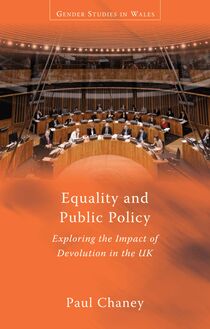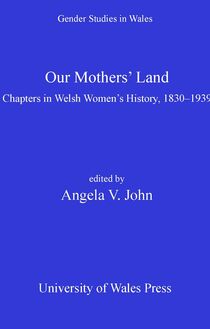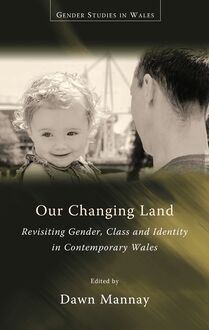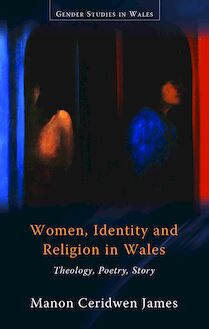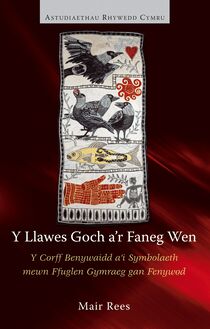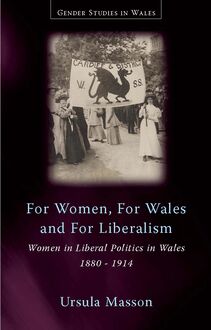-
 Univers
Univers
-
 Ebooks
Ebooks
-
 Livres audio
Livres audio
-
 Presse
Presse
-
 Podcasts
Podcasts
-
 BD
BD
-
 Documents
Documents
-
- Cours
- Révisions
- Ressources pédagogiques
- Sciences de l’éducation
- Manuels scolaires
- Langues
- Travaux de classe
- Annales de BEP
- Etudes supérieures
- Maternelle et primaire
- Fiches de lecture
- Orientation scolaire
- Méthodologie
- Corrigés de devoir
- Annales d’examens et concours
- Annales du bac
- Annales du brevet
- Rapports de stage
La lecture à portée de main
Vous pourrez modifier la taille du texte de cet ouvrage
Découvre YouScribe en t'inscrivant gratuitement
Je m'inscrisDécouvre YouScribe en t'inscrivant gratuitement
Je m'inscrisEn savoir plus
Vous pourrez modifier la taille du texte de cet ouvrage
En savoir plus

Description
This book provides varied perspectives on queer history, culture, politics and life in Wales. It addresses the queering of the Welsh language in examples from the nineteenth and twenty-first centuries, acquainting readers with such figures as Felicia Hemans, George Powell, and Edward Thomas; and it explores forms of lesbian belonging, the possibilities of transgender Wales, the communities of queer Welsh television and film, and the many places of the queer Welsh ‘home’. This book for the first time brings together work by a wide variety of authors working in varied areas of queer Welsh culture; its chapters mark the beginning of what will be an ongoing discussion of sexual and national life in Wales with essays that launch an important discussion of queer life and suggesting that perhaps Wales has always been a bit of a queer place to live.
I. The Queer Past Before 1900
Queer Loss: Felicia Hemans, (trans)nationalism, and the Welsh Bard
Daniel Hannah
‘Gender difference is nothing’: Cranogwen and Victorian Wales
Jane Aaron
‘Please don’t whip me this time’: The Passions of George Powell of Nant-Eos
Harry Heuser
From Huw Arwystli to Siôn Eirian: Representitive Examples of Cadi/Queer Life from Medieval to Twentieth Century Welsh Literature
Mihangel Morgan
II. Placing Queer Wales after 1900
‘A queer kind of fancy’: women, same-sex desire, and nation in Welsh literature
Kirsti Bohata
‘Not friends / But fellows in a union that ends’: Associations of Welshness and Non-heteronormativity in Edward Thomas
Andrew Webb
Fairy Tale Drag and the Transgender Nation in Rhys Davies, Erica Wooff, and Jan Morris.
Huw Osborne
III. Building Queer Wales Post-Devolution
Lesbian Motherhood in the South Wales Valleys: A Narrative Exploration
Alys Einion
Living in Fear: Homophobic Hate Crime in Wales
Matthew Williams and Jasmin Tregidga
Heb addysg, heb ddawn (Without education, without gift): LGBTQ Youth in Educational Settings in Wales
John Sam Jones
IV. Performing Contemporary Queer Wales
Omnisexuality and the City: Exploring National and Sexual Identity through BBC Wales’ Torchwood
Rebecca Williams and Ruth McElroy
Queer/Welsh and Welsh/Queer: Performing Hybrid Wales
Stephen Greer
Sujets
Informations
| Publié par | University of Wales Press |
| Date de parution | 20 juin 2016 |
| Nombre de lectures | 0 |
| EAN13 | 9781783168651 |
| Langue | English |
Informations légales : prix de location à la page 0,0824€. Cette information est donnée uniquement à titre indicatif conformément à la législation en vigueur.
Extrait
QUEER WALES
Gender Studies in Wales Astudiaethau Rhywedd yng Nghymru
Series Editors Jane Aaron, University of South Wales Brec’hed Piette, Bangor University Sian Rhiannon Williams, Cardiff Metropolitan University
Series Advisory Board Deirdre Beddoe, Emeritus Professor Mihangel Morgan, Aberystwyth University Teresa Rees, Cardiff University
The aim of this series is to fill a current gap in knowledge. As a number of historians, sociologists and literary critics have for some time been pointing out, there is a dearth of published research on the characteristics and effects of gender difference in Wales, both as it affected lives in the past and as it continues to shape present-day experience. Socially constructed concepts of masculine and feminine difference influence every aspect of individuals’ lives; experiences in employment, in education, in culture and politics, as well as in personal relationships, are all shaped by them. Ethnic identities are also gendered; a country’s history affects its concepts of gender difference so that what is seen as appropriately ‘masculine’ or ‘feminine’ varies within different cultures. What is needed in the Welsh context is more detailed research on the ways in which gender difference has operated and continues to operate within Welsh societies. Accordingly, this interdisciplinary and bilingual series of volumes on Gender Studies in Wales, authored by academics who are leaders in their particular fields of study, is designed to explore the diverse aspects of male and female identities in Wales, past and present. The series is bilingual, in the sense that some of its intended volumes will be in Welsh and some in English.
Also in series
Dawn Mannay, Our Changing Land: Revisiting Gender, Class and Identity in Contemporary Wales
Alice Entwistle, Poetry, Geography, Gender: Women Rewriting Contemporary Wales
Kirsti Bohata and Katie Gramich, Rediscovering Margiad Evans: Marginality, Gender and Illness
Angela V. John, Our Mothers’ Land: Chapters in Welsh Women’s History, 1830–1939
For all titles in the Gender Studies in Wales series please visit www.uwp.co.uk
QUEER WALES
The History, Culture and Politics of Queer Life in Wales
Edited by
Huw Osborne
CARDIFF UNIVERSITY OF WALES PRESS 2016
© The Contributors, 2016
All rights reserved. No part of this book may be reproduced in any material form (including photocopying or storing it in any medium by electronic means and whether or not transiently or incidentally to some other use of this publication) without the written permission of the copyright owner except in accordance with the provisions of the Copyright, Designs and Patents Act. Applications for the copyright owner’s written permission to reproduce any part of this publication should be addressed to the University of Wales Press, 10 Columbus Walk, Brigantine Place, Cardiff, CF10 4UP.
www.uwp.co.uk
British Library Cataloguing-in-Publication Data A catalogue record for this book is available from the British Library.
ISBN (pb) 978-1-7831-6863-7 e-ISBN 978-1-7831-6865-1
The right of the Contributors to be identified as authors of their contributions has been asserted by them in accordance with 77, 78 and 79 of the Copyright, Designs and Patents Act 1988.
The University of Wales Press acknowledges the financial support of the Welsh Books Council.
Cover image: Ianto’s Shrine, Cardiff Bay © Innovation Works UK Ltd/Alamy Stock Photo.
For Cory In loving memory
Contents
Acknowledgements
List of Illustrations and Figures
Notes on Contributors
Introduction
Huw Osborne
I. THE QUEER PAST BEFORE 1900
1 Queer Loss: Felicia Hemans, (Trans)nationalisms and the Welsh Bard
Daniel Hannah
2 ‘Gender difference is nothing’: Cranogwen and Victorian Wales
Jane Aaron
3 ‘Please don’t whip me this time’: The Passions of George Powell of Nant-Eos
Harry Heuser
4 From Huw Arwystli to Siôn Eirian: Representative Examples of Cadi /Queer Life from Medieval to Twentieth-century Welsh Literature
Mihangel Morgan
II. PLACING QUEER WALES AFTER 1900
5 ‘A queer kind of fancy’: Women, Same-sex Desire and Nation in Welsh Literature
Kirsti Bohata
6 ‘Not friends / But fellows in a union that ends’: Associations of Welshness and Non-heteronormativity in Edward Thomas
Andrew Webb
7 Fairy-tale Drag and the Transgender Nation in Rhys Davies, Erica Wooff and Jan Morris
Huw Osborne
III. BUILDING QUEER WALES POST-DEVOLUTION
8 Lesbian Motherhood in the South Wales Valleys: A Narrative Exploration
Alys Einion
9 Living in Fear: Homophobic Hate Crime in Wales
Matthew Williams and Jasmin Tregidga
10 Heb Addysg, Heb Ddawn (Without Education, Without Gift): LGBTQ Youth in Educational Settings in Wales
John Sam Jones
IV. PERFORMING CONTEMPORARY QUEER WALES
11 Omnisexuality and the City: Exploring National and Sexual Identity through BBC Wales’s Torchwood
Rebecca Williams and Ruth McElroy
12 Queer/Welsh and Welsh/Queer: Performing Hybrid Wales
Stephen Greer
Notes
Select Bibliography
Acknowledgements
This project began several years ago, so there are many people who have contributed in small and major ways. I am indebted to colleagues who provided guidance and sensitive editorial advice on certain aspects of the book. Thanks to my colleagues in the Department of English at the Royal Military College of Canada, especially Drs Helen Luu, Laura Robinson and Chantel Lavoie. Katie Gramich was very supportive in the early stages, and directed me to many people who might be interested in contributing. I am especially grateful to Jane Aaron for her kind and consistent encouragement throughout these several years of the book’s development. Jane nudged me back on track more than once and was always available with advice and guidance. There are many others (too many to list) at conferences and pubs (often both) who have shared ideas, sources and criticisms; thanks to everyone who so generously discussed this project with me. In fact, a great deal of this book emerged from panels at various conferences, especially the conferences of the North American Association for the Study of Welsh Culture and History and the conference of the Association for Welsh Writing in English, so I am grateful to all of my colleagues who participated in these panels and who gave such constructive feedback. Sarah Lewis at the University of Wales Press merits a very special thank you. Her support and guidance throughout this process have been invaluable. She has been remarkably patient with me through several delays, and her generous assistance was considerable at all stages, from proposal to publication. The research and travel required for this book was made possible in part through the financial support of the Royal Military College of Canada’s Academic Research Program. Lastly, I must also thank the contributors to this collection from whom I have learned so much. I think one edits a collection of essays when one can’t find the book one would like to read, and I am pleased to say that I have that book now, and I am honoured to be part of it.
List of Illustrations and Figures
Illustrations
1. Nant-Eos, today (2012), by the author, photograph
2. Love Dreaming by the Sea (1871), by Simeon Solomon, watercolour, School of Art Museum and Gallery, Aberystwyth University
3. Boy on a Dragonfly [detail] (1866), by Johann Baptist Zwecker, watercolour with body colour, School of Art Museum and Gallery, Aberystwyth University
4. Satan Summoning His Legions (1792), by Richard Westall, watercolour with washes and body colour, School of Art Museum and Gallery, Aberystwyth University
5. George Powell (1860s), by unknown, photograph, School of Art Museum and Gallery, Aberystwyth University
Figures
1. Sexual orientation by cohesion scale
2. General fear of crime by sexual orientation
3. Sexual orientation by general satisfaction
4. HC a problem in level area by SO
5. General fear of hate crime on the basis of sexual orientation
6. Precautions scale by SO
7. Impact of HC victimization worry by SO
8. Who were you with at the time of the HC
9. Where did the HC happen by PCG
10. If you have been a victim of HC more than once, were any committed by the same perpetrator(s)?
11. Perceptions of motivation for HC perpetration by SO HC victims
12. HC perpetrator relationship by PCG
13. Number of HC perpetrators by strand
14. Gender of perpetrators by strand
15. Age of HC perpetrators by strand
16. Race of HC perpetrators by strand
17. Satisfaction with contact with police by type of hate crime/incident reported
Notes on Contributors
Jane Aaron is Emeritus Professor at the University of South Wales. She is the author of A Double Singleness: Gender and the Writings of Charles and Mary Lamb (Oxford: Clarendon Press, 1991) and a Welsh-language book on nineteenth-century women’s writing in Wales, Pur fel y Dur: Y Gymraes yn Llên y Bedwaredd Ganrif ar Bymtheg (Cardiff: University of Wales Press, 1998). She also co-edited the volumes Out of the Margins: Women’s Studies in the Nineties (London: Falmer Press, 1991), Our Sisters’ Land: The Changing Identities of Women in Wales (Cardiff: University of Wales Press, 1994), Postcolonial Wales (Cardiff: University of Wales Press, 2005), and edited a number of volumes for the Honno classics series, including an anthology of Welsh women’s short stories, A View across the Valley: Short Stories from Women in Wales 1850–1950 (Dinas Powys: Honno Press, 1999). Her latest books include Nineteenth-century Women’s Writing in Wales: Nation, Gender and Identity (Cardiff: University of Wales Press, 2007), the first in the Gender Studies in Wales series, and Gendering Border Studies (Cardiff: University of Wales Press, 2010), co-edited with Henrice Altink and Chris Weedon.
Kirsti Bohata is Associate Professor and Director of CREW (the Centre for Research into the English Literature and Language of Wales) at Swansea University. S
-
 Univers
Univers
-
 Ebooks
Ebooks
-
 Livres audio
Livres audio
-
 Presse
Presse
-
 Podcasts
Podcasts
-
 BD
BD
-
 Documents
Documents
-
Jeunesse
-
Littérature
-
Ressources professionnelles
-
Santé et bien-être
-
Savoirs
-
Education
-
Loisirs et hobbies
-
Art, musique et cinéma
-
Actualité et débat de société
-
Jeunesse
-
Littérature
-
Ressources professionnelles
-
Santé et bien-être
-
Savoirs
-
Education
-
Loisirs et hobbies
-
Art, musique et cinéma
-
Actualité et débat de société
-
Actualités
-
Lifestyle
-
Presse jeunesse
-
Presse professionnelle
-
Pratique
-
Presse sportive
-
Presse internationale
-
Culture & Médias
-
Action et Aventures
-
Science-fiction et Fantasy
-
Société
-
Jeunesse
-
Littérature
-
Ressources professionnelles
-
Santé et bien-être
-
Savoirs
-
Education
-
Loisirs et hobbies
-
Art, musique et cinéma
-
Actualité et débat de société
- Cours
- Révisions
- Ressources pédagogiques
- Sciences de l’éducation
- Manuels scolaires
- Langues
- Travaux de classe
- Annales de BEP
- Etudes supérieures
- Maternelle et primaire
- Fiches de lecture
- Orientation scolaire
- Méthodologie
- Corrigés de devoir
- Annales d’examens et concours
- Annales du bac
- Annales du brevet
- Rapports de stage
